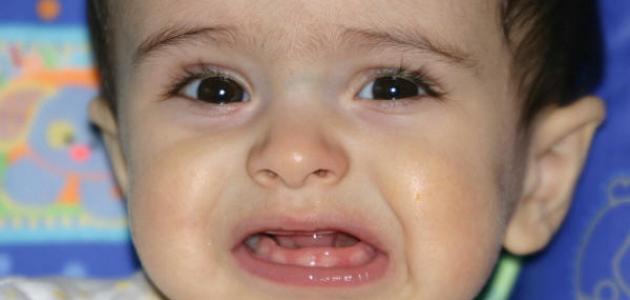Stages of tooth development in children
The process of the appearance of teeth in children is one of the important stages in the child’s life. The appearance of the first teeth in the child’s mouth is called teething, and they begin to appear around the sixth month. The timing of the appearance of teeth varies from one child to another, and some children may be born with their first teeth, while others appear. In the fourth month of life, others have teeth appear at approximately the age of one year. The appearance of the first teeth may be accompanied by some problems in children, such as high temperature and gum pain. At this stage, the child can be given some painkillers and antipyretics. The primary and permanent teeth must be kept clean, and children must be taught how to clean and care for their teeth.
Teething stages
- The lower front teeth appear from approximately the fourth month until the seventh month.
- The upper front teeth appear from approximately the sixth month until the eighth month.
- The upper lateral incisors appear from approximately the ninth to eleventh month.
- The lower lateral incisors appear from the tenth to the twelfth month.
- Molars appear from the twelfth to the sixteenth month.
- Second molars appear from the twentieth to the thirtieth month.
- The development of baby teeth ends in children approximately three to five years old.
- The number of baby teeth is approximately twenty.
- Children begin replacing baby teeth at approximately the age of six.
- The replacement of baby teeth ends until approximately the age of fifteen.
Read also:Causes of sweating during sleep in children
Things to ease the effects of teething
- Teething rings: Teething rings are given to the child to help alleviate the effects of tooth eruption. These relieving rings can distract the child from feeling teething pain. After finishing using them, they must be washed well and placed in the refrigerator. When they are given to the child again, they should be washed with lukewarm water. The teething rings should not be tied. Teething rings around the child's neck because they can pose a threat to his health, and the child can be given a cold, wet towel.
- Teething gel: The pain resulting from teething can be alleviated by using sugar-free teething gel for children over the age of four months. The teething gel consists of a mild local anesthetic that reduces the pain resulting from the eruption of teeth, and also contains antiseptic substances that relieve gum infections.
- Painkillers: If the child's temperature rises, antipyretics or analgesic medications for children can be used, and sugar-free varieties should be chosen.
- Cold drinks: Cold, sugar-free drinks help calm the child and can increase saliva secretion. The best option is to give the child cold water.









